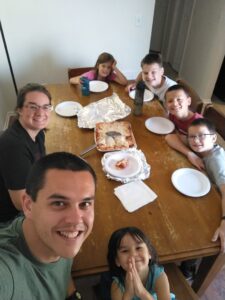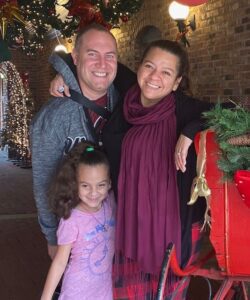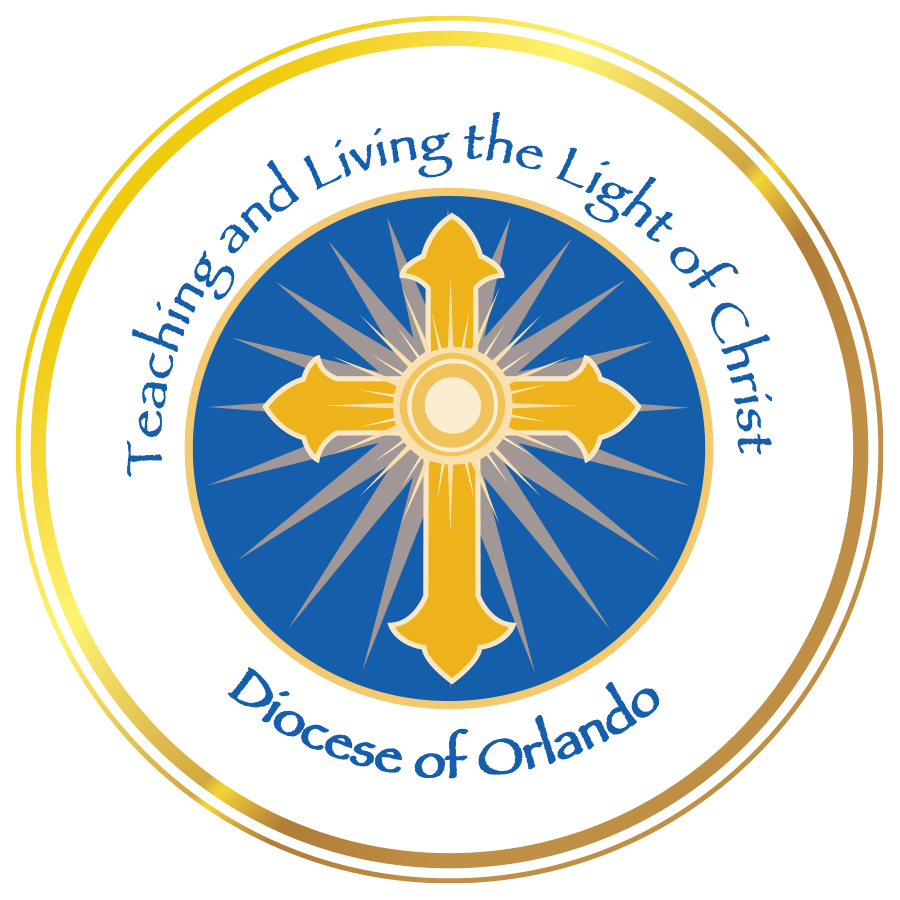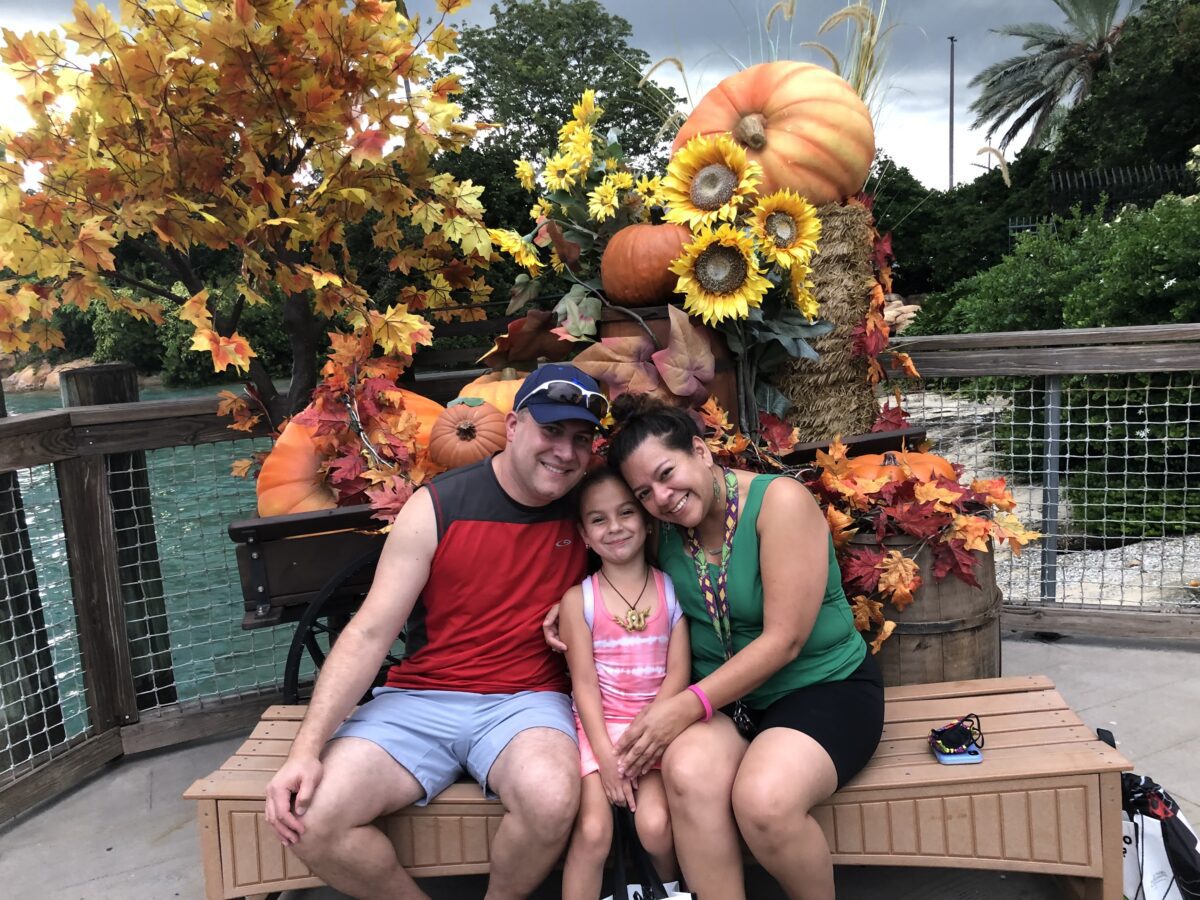ORLANDO | Charity starts at home. Many of us grew up hearing that phrase. It wasn’t trying to teach selfishness. It taught that family is a community of holy people who need to represent that holiness in the way they interact with one another. Catholic families’ lives should look different. So how do they do that?
Before Vatican II, the model of holiness was the Holy Family and church clergy and religious. These are wonderful examples of holiness, but as Dan Boyd, director of the Diocese of Orlando’s Family, Laity and Life office notes, “families need a model of holiness that informs every aspect of family life.”
He explained, “While we know Joseph was a just man and Mary was the perfect mother for Jesus, scripture doesn’t provide many details on how the Holy Family lived and interacted. Without that picture, it can be challenging to understand how to imitate Jesus, Mary and Joseph and live as our own holy family.”
Vatican II resurrected the term “domestic church” in appreciation of the value and importance of the family and its salvific mission in the world. It recognized the family as an “ecclesial community”. As Pope Francis states in his apostolic exhortation Amoris Laetitia, “The Church is a family of families, constantly enriched by the lives of all those domestic Churches.”
These statements beckon the question, then how does this “domestic church” thrive in holiness? John Molloy, director of children’s ministry at the diocese, offers some ideas based on the webinar series, Renewing Catholic Family Life by the Pastoral Solutions Institute. Its founders, Greg and Lisa Popcak, were recently asked to join the United States Conference of Catholic Bishop’s Committee on Laity, Marriage, Family Life and Youth.

Molloy and his wife, Erin, have five children between the ages of 6 and 13. Both admit holiness can be difficult when faced with the varying needs of each child, especially after a long day. Temperaments become cranky and tolerance wanes.
He assures being a holy family “does not mean you have to do extra stuff. It means you live family life in a Christian way.” He explained, if families are the domestic church, “then there is a liturgy to domestic church life.” He offers the Popcaks’ three rites as a guide: The Rite of Relationship, Rite of Rituals of Connection and Rite of Reaching Out.
“In relationships we look at how our love reflects Christ’s love,” he said. “It is focusing on the warmth of our home and asks if it is a faith-centered warmth? For parents, are we incarnating love for our children? Are we spending quality time with them? Is our discipline not just punitive, but forming character and virtue, where the children know they are loved and cared for?” He says this is important because “parents are the vision of God for their kids, for better or for worse.”
It is not about making major changes. “This is more about connecting with the stuff that is already present in family life, the messiness of family life,” he said. As an example, Molloy and his wife, Erin, applied some of the principals to their own family. After noticing a constant “bickering” amongst the children, they realized “a need for more extravagant love and affection.” At the end of the night, he and Erin added a blessing of one another from Nm 6:24, after they prayed. They asked all their children “to give each other hugs and say I love you.” He said this improved “the overall family warmth toward one another,” changing old patterns. Erin said, “knowing we all still love one another, even after a day of disagreements,” is a good thing.
She acknowledges sometimes they are rushed because it’s been a late night, but they still do a “group hug and say these words to one another.” For their children it has become common practice. Erin says the changes may not “be perceptible right now, but we are cultivating this attitude family members should have toward one another.” She hopes it carries over to their adult lives. “It fosters an interest in the good of the other, even when we disagree.”
The Rite of Rituals of Connection involves prayer, talk, play, and work. For instance, with chores, “we can take an attitude of- they need to get done or we can use it as a way to bond,” Molloy noted. “It’s about focusing on the Christian aspect of “values of work ethic and outlook on life, life goals…”
Recently, Molloy presented a three-part series on Catholic Family Life at St. Catherine of Siena Parish in Kissimmee. While students were in faith formation, their parents stayed to learn more about building up their families in faith.

Janett Duran, mom of two teenagers (ages 15 and 18) said the sessions helped her realize how disconnected she felt from her children. A single mom working as a nurse, she came home exhausted. She realized how often she sat down with them, thinking she was listening, but was actually distracted by her laptop open in front of her, her phone, their phones or the television.
“Now, when we say we are going to talk as a family, we step away from that environment,” she said. Both of her children have noticed she is more attentive and responsive. “It increased my communication with my kids,” Duran said, adding now they even share the best and worst of their day with one another. Consequently, they all feel more connected.
Lastly, the Rite of Reaching Out entails how we serve one another within and outside the home. “If we don’t have Christ at the center of our service, then we are just another good humanitarian organization. But that is not what God is calling us to,” Molloy said noting the rites reflect the way we do things, but they are not a strict set of rules.
 Tony and Faye Roman are both educators in Orange County. Tony especially appreciated this section which spoke of family corporal and spiritual works of mercy because it “helped us connect everything (our daughter) is doing to the faith as well, not seeing things in isolation.”
Tony and Faye Roman are both educators in Orange County. Tony especially appreciated this section which spoke of family corporal and spiritual works of mercy because it “helped us connect everything (our daughter) is doing to the faith as well, not seeing things in isolation.”
After Molloy’s workshops, they went home and shared with their 7-year-old. Because she likes to help around the house, often acting with kind gestures of care for her grandmother, Tony told her, “what you are doing is going to bring you closer to God as well.” Now she sees her kindness in the light of faith.
Molloy noted, “faith is the source of warmth in the home… A faith-filled family looks different than a family without faith.” The end goal he says, is to have “strong Catholic families that show the love of Christ in everything they do as families.”
The Office of Laity, Family, and Life presents a series of three workshops during faith formation classes at parishes, or day-long presentations for parents, depending on need. Ask your director of religious education if one is not scheduled at your church.
Click here to get started on simple challenges to become holier families this Lent.
For simple challenges in Spanish, click here.
By Glenda Meekins of the Florida Catholic Staff, March 16, 2022

